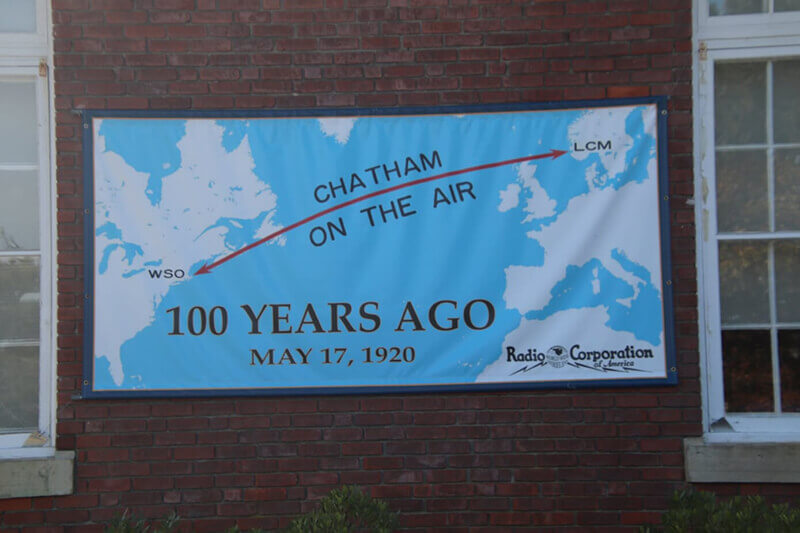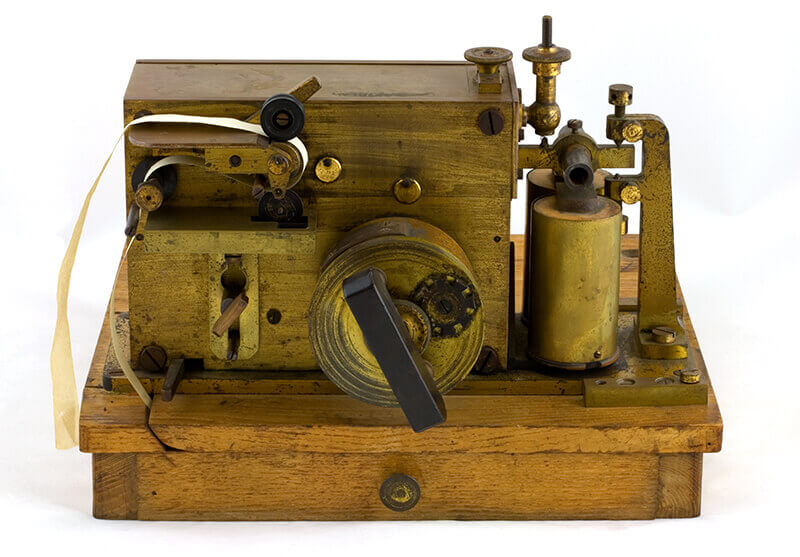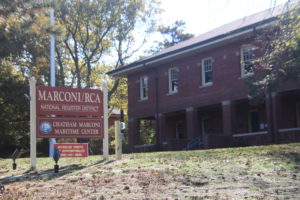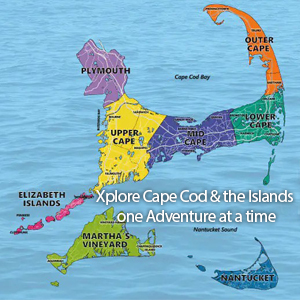Museum
Chatham Marconi Maritime Center
The Chatham Marconi Maritime Center is located on the site of the former Marconi-RCA Wireless Receiving Station in Chatham. This receiving station was part of WCC, a short-wave radio station that exchanged messages with ships, planes, and zeppelins. For most of the twentieth century, WCC was the busiest public ship-to-shore radio station in the world.
Historical Significance of the Chatham Marconi Maritime Center
At the turn of the twentieth century, inventor Guglielmo Marconi built a radio station on a beach in South Wellfleet. From this original station, Marconi completed the first two-way radio transmission across the Atlantic Ocean in 1903. Unfortunately, the erosion and harsh winds immediately began to wear on this station, which was perched on the edge of Marconi Beach.
Marconi realized that, if he wanted to establish a permanent radio station on Cape Cod, he needed to move it away from the coast. In 1914, he rebuilt the transmitter and receiving station in Chatham. Later, the transmitter was moved to Marion and then South Chatham to minimize interference. Today, the Chatham Marconi Maritime Center encompasses eight brick buildings built by Marconi in 1914.
 Throughout the twentieth century, captains and pilots depended on WCC. In 1928, Richard E. Byrd kept contact with WCC as he piloted the first flight to the South Pole. In 1929, the Graf Zeppelin received critical information from WCC during the first around-the-world flight. In 1961, operators at WCC communicated with the Santa Maria during the ship’s infamous hijacking.
Throughout the twentieth century, captains and pilots depended on WCC. In 1928, Richard E. Byrd kept contact with WCC as he piloted the first flight to the South Pole. In 1929, the Graf Zeppelin received critical information from WCC during the first around-the-world flight. In 1961, operators at WCC communicated with the Santa Maria during the ship’s infamous hijacking.
As radio technology changed, so did WCC. In 1920, the Radio Corporation of America replaced all of Marconi’s original equipment with newer technology. WCC originally operated on the low frequency 500 kHz, 750 kHz and 1 MHz radio bands, but switched to higher frequency maritime bands in 1929. Today, the US Air Force still uses the Marion Station to reach pilots in the Arctic.
Visiting the Chatham Marconi Maritime Center

At the Chatham Marconi Maritime Center, visitors can explore interactive exhibits that trace the evolution of radio communication from the days of Marconi through the end of the twentieth century. he center also showcases vintage communication equipment, photos, documents, and interactive displays that tell the story of Marconi’s work and its influence on the modern world of technology.
Visitors can explore hands-on exhibits, allowing them to send Morse code messages, learn about signal encryption and decryption, and understand how maritime communication evolved from the early 20th century to modern satellite communications.
The museum also features video presentations and guided tours that provide context about the station’s operations and the people who worked there, including Navy radio operators and engineers.

Outside the museum, you can walk through the site’s former antenna field, where the massive antenna structures once stood, linking Chatham to ships and other Marconi stations around the globe. This part of the visit provides a sense of the scale and importance of the station during its heyday.
While the station no longer provides critical support for ships, planes, or zeppelins, the WCC call sign lives on in the center’s amateur radio station, WA1WCC.
Museum Open Hours
The museum is usually open seasonally, from late spring to fall, but it’s best to check their website for current hours and any special events.
- Admission: There is typically a small admission fee, with discounts for seniors, students, and children.
- Guided Tours: Available during peak visiting times or by appointment.
Visiting the Chatham Marconi Maritime Center provides a blend of history, technology, and scenic beauty, making it an enriching stop for anyone interested in communication history or Cape Cod’s maritime heritage.
Chatham is a beautiful seaside town, and after visiting the Marconi Station, you can explore the nearby beaches, the Chatham Lighthouse, Chatham Fish Pier and other coastal attractions.








